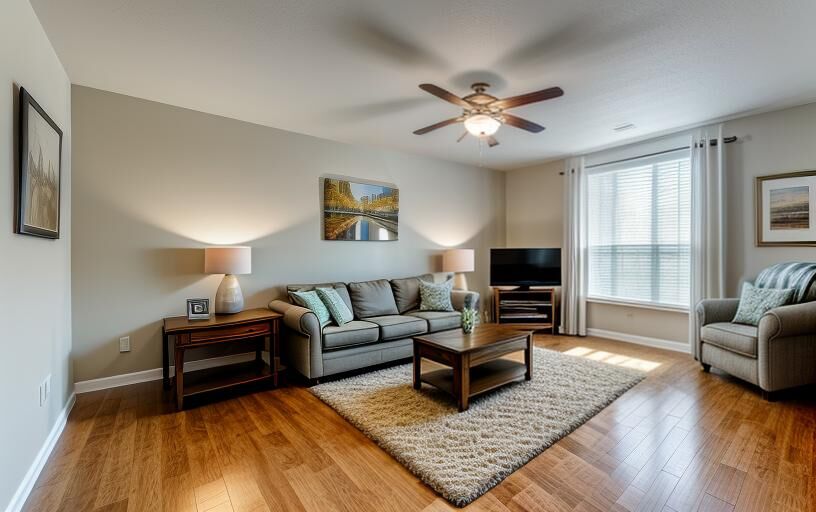As the temperature rises and summer days stretch out longer, keeping your home cool becomes a top priority. Luckily, there are numerous strategies beyond just cranking up the air conditioning that can help you maintain a comfortable indoor environment. In this blog post, we will explore effective tips and techniques that will not only help beat the heat but also improve energy efficiency and reduce utility bills.
One of the simplest and most effective ways to keep your home cool is to maximize the use of natural ventilation. On cooler mornings and evenings, open windows and doors to allow fresh air to circulate. Cross-ventilation, achieved by opening windows on opposite sides of the house, can usher in a refreshing breeze, significantly lowering indoor temperatures. It is essential to restrict this process during the hottest parts of the day, usually between noon and four in the afternoon, when the outdoor air is at its warmest.
Another effective strategy is to utilize ceiling fans. Ceiling fans can create a wind-chill effect, making the air feel cooler than it actually is. When using ceiling fans, ensure they are set to rotate counterclockwise in the summer to push the cool air downwards. Additionally, consider using portable fans in rooms where you spend the most time. By positioning the fan to blow air directly towards you, you can enhance your comfort even without lowering the thermostat.
Keeping your blinds and curtains closed during the day is another excellent way to fend off the sun’s heat. Sunlight streaming through windows can significantly increase indoor temperatures. Light-colored drapes or reflective blinds can help reduce heat gain by reflecting sunlight away from your living spaces. If you have the option, consider investing in blackout curtains or thermal drapes, which are specifically designed to block heat and keep your home cooler.
Landscaping is another underutilized method that can dramatically affect your home’s temperature. Planting trees and shrubs strategically can provide shade to your home, reducing direct sunlight hitting the walls and windows. If you have a porch or patio, adding outdoor shade structures like awnings, pergolas, or umbrellas can also help keep your living spaces cooler by blocking the sun’s rays. Moreover, a well-placed shade tree can lower temperatures close to the foundation of your home, reducing cooling costs.
When it comes to cooling your home, attention to your appliances and lighting can make a difference. Traditional incandescent bulbs produce a significant amount of heat when in use. Switching to energy-efficient LED lighting not only reduces energy consumption but also minimizes heat generation. Additionally, be mindful of your heat-producing appliances. Running the dishwasher, washing machine, or oven during the hottest parts of the day can elevate indoor temperatures. Whenever possible, use these appliances in the morning or evening when it is cooler.
Sealing any gaps or cracks in your home’s windows and doors can also help keep the hot air out while maintaining the cool air inside. Weather stripping and caulking can be effective solutions to shut down avenues through which heat might enter. Additionally, consider adding insulation to your attic or walls which can further reduce heat gain by acting as a barrier.
In the event that the heat becomes oppressive, investing in energy-efficient air conditioning systems may be necessary. If you already have air conditioning, regular maintenance is essential. Clean or replace air filters monthly and have your system serviced at least once a year to ensure it operates at peak efficiency. Programmable thermostats can also help manage cooling; setting the thermostat a few degrees higher when you are away can result in substantial savings.
Another innovative way to keep your home cool is to perform summer home maintenance. Inspecting your attic for proper ventilation can have a direct impact on indoor temperatures. Attics can become extremely hot in the summer months, so ensure that your home has adequate ventilation to allow hot air to escape. Installing a fan in the attic can further enhance air circulation, keeping your home cooler overall.
In addition to these strategies, you might also consider adopting cooling technologies. Evaporative coolers or swamp coolers can be an energy-efficient alternative, especially in dry climates. These systems use water evaporation to cool the air and can significantly lower temperatures without consuming excessive energy.
Finally, the way you dress and prepare for the heat can contribute to your overall comfort. Wearing breathable, lightweight fabrics can help regulate body temperature. Additionally, staying hydrated is crucial; drinking plenty of water helps your body maintain its core temperature.
By combining these strategies, you can create a multi-faceted approach to defeating the summer heat. Embrace a mindset of energy efficiency while finding cooling solutions that work for your unique living situation. Implementing these tips not only fosters a comfortable living space but also contributes to a sustainable lifestyle, reducing your carbon footprint and fostering a healthier planet.
As you navigate the challenges of rising temperatures, remember that a well-cared-for home can provide a comfortable oasis even during the hottest months of the year. With a combination of clever ventilation, strategic shading, energy-efficient appliances, and thoughtful home maintenance, you can ensure that your home remains a cool sanctuary all summer long.

